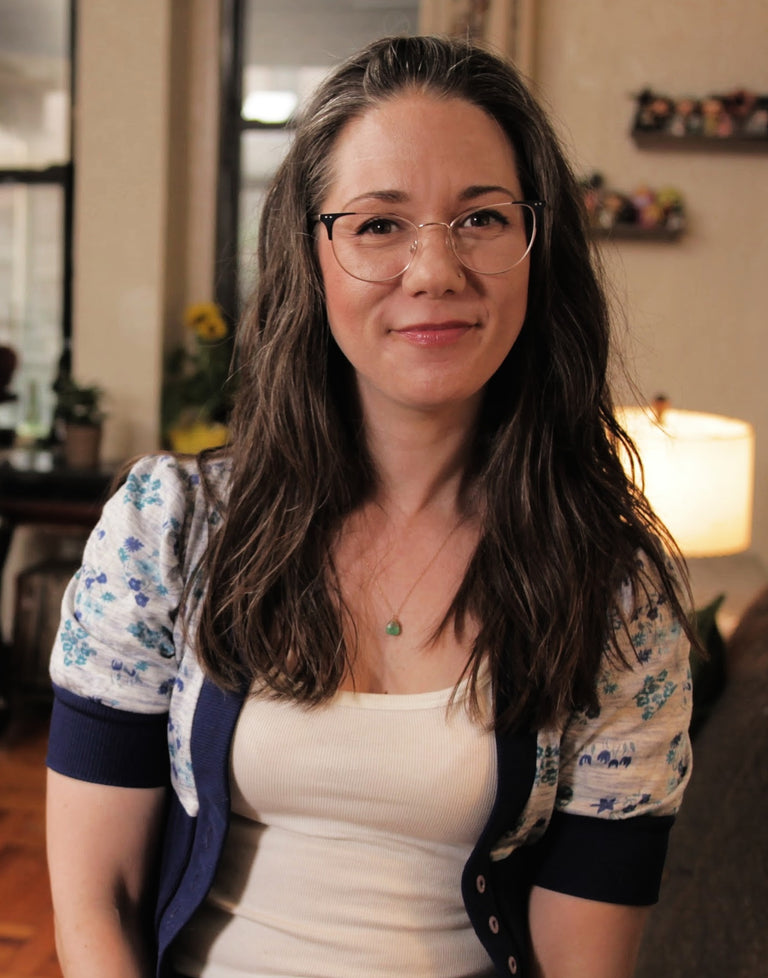Hormones play vital roles in our bodies. As part of the endocrine system, hormones like testosterone travel through the blood to organs, skin, muscles and other tissues delivering messages that directly impact how our body functions.
Many people think that high testosterone levels cause hair loss, but this is largely a longstanding hair loss confusion. The connection between testosterone, hair thinning and hair loss is complex and nuanced. Read on to understand this connection, along with what you can do to support luscious, healthy looking hair.
#include-related-slider#
What Is Testosterone?
Testosterone is often referred to as the male sex hormone, but the truth is it’s important to everyone’s day-to-day health. Yes, it is important for sexual wellness and reproduction in all gender identities, but more generally, it’s involved in many processes responsible for the growth and maintenance of a healthy body.
Testosterone takes different forms in the body. Some of the testosterone produced by the body is “free,” meaning it isn’t bound to proteins and circulates freely to be used when needed. Testosterone can also bind to a protein called albumin, and this form of testosterone is also easily used by the body. It might also bind to another protein called sex hormone-binding globulin (SHBG), which makes it inactive.
Testosterone might also be converted into dihydrotestosterone (DHT), where it is primarily used by the body in the prostate, skin, and hair follicles.
Best Seller: The GRO More Kit for Hair
The Testosterone and Hair Loss Connection
“Although we often assume a connection between hair loss and testosterone, studies reveal a more complicated relationship,” shared Dr. Erum Ilyas, board-certified dermatologist and founder of Amber Noon.
High levels of both testosterone and DHT have been implicated in hair loss, but when it comes to how these hormones impact our follicles, it’s actually more about the follicles themselves. In fact, to really underscore the complexity of this relationship, it’s really about the interplay between your genetics, the follicles and these hormones.
The Interplay of Genetics and DHT
The levels of testosterone and DHT circulating in your blood don’t dictate whether you will see hair loss or not — you might have normal or even low levels of these hormones and still experience hair loss. What dictates if and how these hormones will impact your hairline is believed to be largely genetic.
Specifically, activation of the hair follicle cytoplasmic androgen receptors (AR) is linked to hair loss. Some folks have a higher number and/or more sensitive receptors than others, which is understood to be the underlying cause of both male pattern baldness and female pattern baldness, a hair loss condition more generally referred to as androgenetic alopecia (AGA, also known as androgenic alopecia).
“This type of hair loss is propagated by naturally occurring steroid hormones in our bodies called androgens,” explained Dr. Calvin Williams, a board-certified dermatologist with Essential Dermatology Group.
Both testosterone and DHT are androgens, and they impact the receptors in hair follicles. However, DHT has a binding affinity, or an ability to attach, that is five times stronger than testosterone. This means that DHT can have a bigger impact on follicles and likely plays a larger role in androgenetic alopecia.
“DHT has a more sound connection to hair loss given the benefits noted with products that block the 5-alpha reductase enzyme,” explained Dr. Ilyas. The 5-alpha reductase enzyme converts testosterone into DHT. Folks who experience AGA seem to have higher levels of this enzyme. “When this enzyme is blocked, less DHT is produced, delaying the onset of hair loss,” added Dr. Ilyas.
When follicles are more highly sensitive to these hormones, they go through a process of miniaturization or shrinkage. Normal testosterone levels, and even low testosterone levels, can trigger this response in folks that have a genetic predisposition.
“It can lead to the changes we see in hair loss caused by AGA, such as miniaturization of hairs, receding hairlines, and decreased hair density seen at the vertex,” said Dr. Williams. Over time, the hair produced by these affected follicles will become thinner and finer. Eventually, these follicles will stop producing hair altogether.
Learn More: Androgenetic Alopecia Explained
Polycystic Ovarian Syndrome
Polycystic ovarian syndrome (PCOS) is another condition where testosterone could be contributing to hair loss.
PCOS is not a well-understood condition, but it is fairly common and impacts about 15% of women. Women who have PCOS have high levels of androgens (a group of male hormones that testosterone and DHT belong to), which prevent the ovaries from functioning normally. Genes, insulin resistance and inflammation seem to play a role in excess androgen production for women with polycystic ovarian syndrome, too.
PCOS could be a contributing factor in the development of AGA in women, and it might also cause a general thinning all over the scalp.
Get To The Bottom Of It: PCOS & Hair Loss
Can Testosterone Therapy Cause Hair Loss?
Testosterone replacement therapy is commonly used by men who have low levels of testosterone, but it is also used in women who may be lacking this important hormone. Injected testosterone is also used by transgender men as a form of gender-affirming therapy. But can it cause hair loss?
“If a person takes testosterone therapy, there will always be a chance it will cause hair loss,” explained Dr. Williams. “Any increase in androgens or androgen precursors can have a downstream effect and make more of the potent androgen DHT,” he added.
As covered so far, it’s not a matter of more testosterone causing hair loss. But, if you have a family history of AGA or high levels of 5α-reductase, testosterone injections or hormone replacement therapy can lead to higher DHT levels, which could then, in turn, lead to increased hair loss symptoms.
Testosterone therapy might even help with hair growth for some people. “Ironically, there is a study that showed that androgen deficient women receiving testosterone supplementation actually demonstrated increased hair growth,” said Dr. Ilyas.
What Can Do to Help My Thinning Hair?
There is no cure for androgenetic alopecia, although there are options to combat hair loss along with ways to slow the progression of AGA.
Prescription Treatments
Minoxidil is a commonly used prescription topical treatment for people dealing with hair loss caused by AGA, and scientific evidence has shown it increases hair growth in both men and women. Some of minoxidil’s more common side effects include acne, pain, inflammation, soreness and redness at the site(s) of application.
Plant-Powered Alternatives
Want a vegan alternative to minoxidil? Look no further than VEGAMOUR.
We have carefully developed a full line of hair care products designed to support holistic hair wellness from the inside and out. Our bestselling and well-loved GRO+ Advanced Hair Serum is packed with phyto-actives that have been clinically proven to give you fuller-looking hair in as soon as 90 days, satisfaction guaranteed.
Saw palmetto is another plant-powered alternative that has been linked to hair growth with few, as yet uncovered, side effects. In one review, researchers found evidence that saw palmetto, when applied topically, might be beneficial for improving hair quality, hair count and hair density in people who were experiencing androgenetic alopecia and another form of hair loss called telogen effluvium.
While more research is needed, pumpkin seed oil might also prove beneficial by blocking the 5-alpha reductase enzyme’s ability to convert testosterone into DHT. One study showed that its topical application was able to increase the mean hair count of participants by 40% over a period of twenty-four weeks.
Red clover might be another plant-based topical DHT blocker. When red clover was used in combination with oligopeptide-2 and applied topically, it was shown to have some efficacy in treating hair loss associated with DHT. (It’s also a key ingredient in our GRO Hair Serum and GRO+ Advanced Hair Serum!).
Hair Wellness Routine
In addition to tackling the underlying cause of hair loss related to hormones, you can take a holistic approach to hair health by leveling up your hair care game.
Supplements that are formulated specifically to support hair health, like our very own GRO+ Advanced Hair Gummies, can help boost your levels of hair-friendly vitamins and minerals like biotin (vitamin B-7), vitamins A, C and E, along with minerals like zinc and iodine.
Think about your hair care practices. Try being gentle on follicles by limiting tight hairstyles, heat styling and chemical treatments.
Scalp massage might also be a way to boost circulation to follicles and stimulate hair growth. In one study, 69% of participants reported that hair loss due to androgenetic alopecia had improved when consistently massaging their scalp daily over a period of several months. Curious? Grab a GRO Revitalizing Scalp Massager and give it a go!
#include-related-slider#
The Takeaway
The relationship between testosterone and hair loss is complicated, and it’s really more about a nuanced relationship between genetics, our hormone levels and the sensitivity of our scalp follicles.
Androgenetic alopecia, one of the most common forms of hormonal hair loss, affects an estimated 80 million people in the United States. If you think you might be seeing signs of thinning hair or androgenetic alopecia, consult with your doctor or a dermatologist. While there is no cure, there are medical options for treating hair loss caused by AGA. You can also make use of other tools in your hair health toolkit when managing AGA, some of which can slow the progression of hair fall, prevent hair loss and encourage thicker-looking hair.
More From VEGAMOUR
- What Causes Sudden Hair Loss?
- Cancer & Hair Loss - What to Expect
- How to Prevent Hair Loss
- Mature vs. Receding Hairline





















